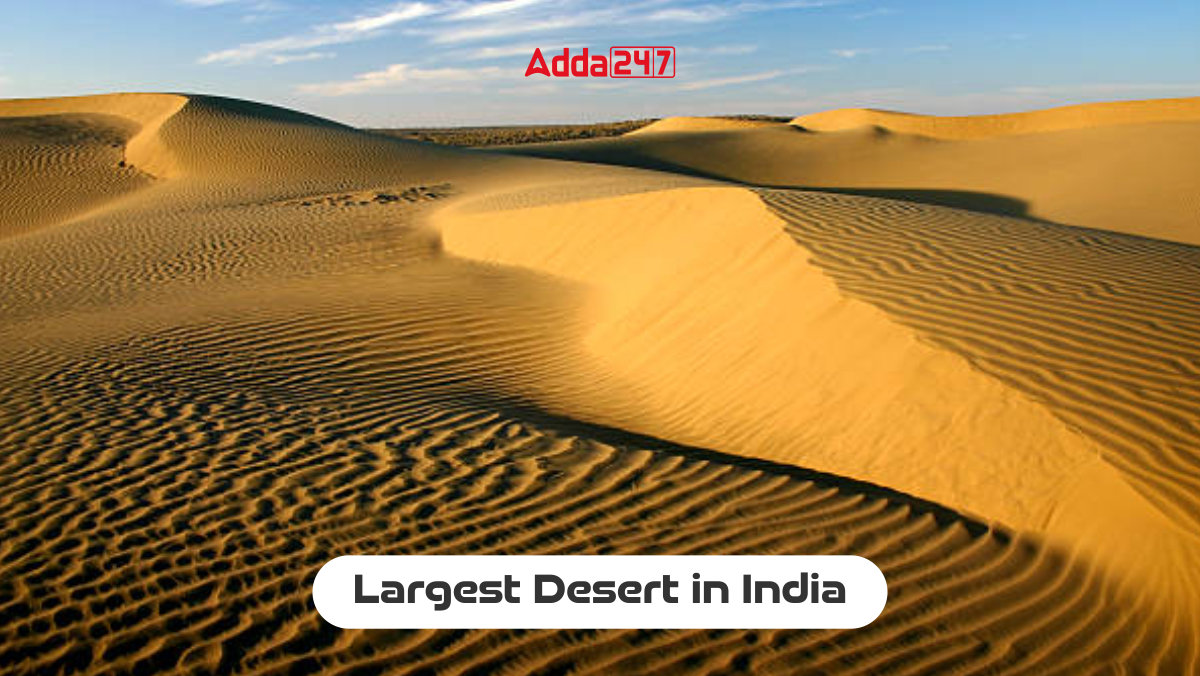Largest Desert in India
The Thar Desert, often referred to as the Great Indian Desert, is renowned as the largest desert in India and a prominent arid region on the Indian subcontinent. Spanning both India and Pakistan, this expansive desert encompasses a considerable territory, displaying an exclusive ecosystem molded by its challenging climate and distinctive geographical characteristics.
India’s Largest Desert – Geographical Boundaries
The Thar Desert is geographically defined by a series of natural boundaries. To the west, it meets the fertile Indus River plain, providing a stark contrast between arid desert and lush agriculture. To the north and northeast, it abuts the Punjab Plain, where the desert’s golden sands give way to the green fields of Punjab. The southeastern boundary is marked by the imposing Aravalli Range, while the southern edge is bordered by the enigmatic Rann of Kachchh.
Largest Desert of India – Harsh Arid Climate
One of the defining features of the Thar Desert is its harsh arid climate. Rainfall in this region is meager, averaging less than 150 millimeters annually. This scarcity of rain results in extreme dryness and the land often appears parched and barren. Such challenging conditions have led to a distinct lack of vegetation in the desert, making it a true desert landscape.
Transient Streams
While the Thar Desert might seem lifeless, it experiences a phenomenon of transient streams during the monsoon season. When the rains arrive, these ephemeral waterways come to life, carving their way through the parched terrain. However, the euphoria is short-lived, as these streams soon vanish into the thirsty sands. The Thar Desert’s underground aquifers are unable to store the water required to sustain a flow to the sea, so these streams are consumed by the desert itself.
Unique Ecosystem of India’s Biggest Desert
Despite its arid appearance, the Thar Desert is not devoid of life. It hosts a unique and resilient ecosystem adapted to the harsh conditions. Wildlife such as the Indian gazelle, desert fox and various species of reptiles and birds have found a way to thrive in this seemingly inhospitable environment. The desert’s flora, although sparse, includes hardy plant species like thorny bushes and drought-resistant trees that have adapted to survive with minimal water.




 Govt. Extends Tenure of SBI MD Ashwini K...
Govt. Extends Tenure of SBI MD Ashwini K...
 Google Launches Its First-Ever Credit Ca...
Google Launches Its First-Ever Credit Ca...
 Top and Bottom 10 Countries in the Globa...
Top and Bottom 10 Countries in the Globa...







